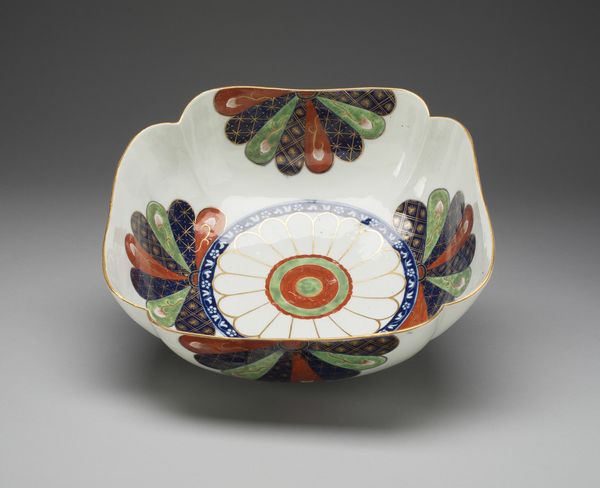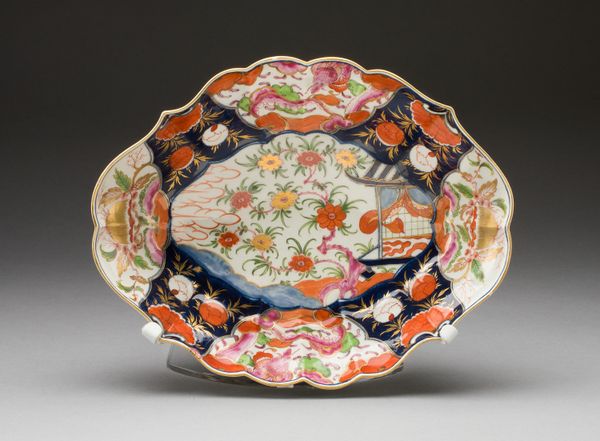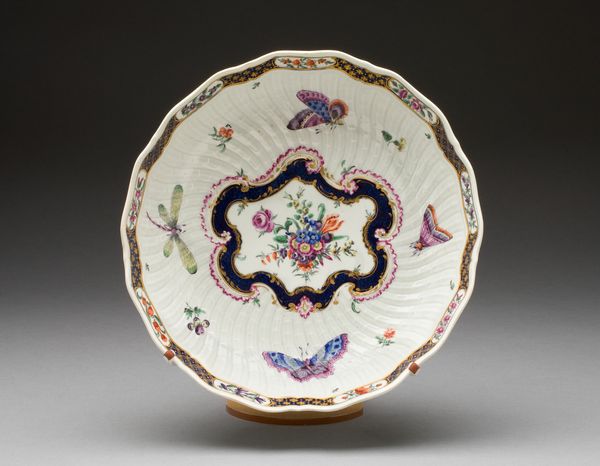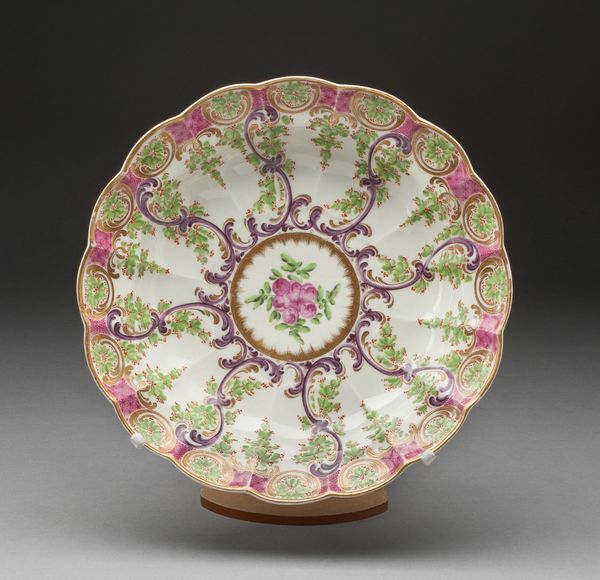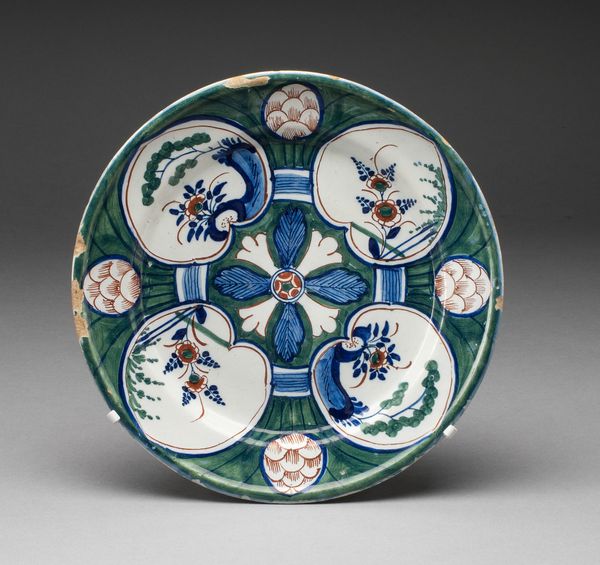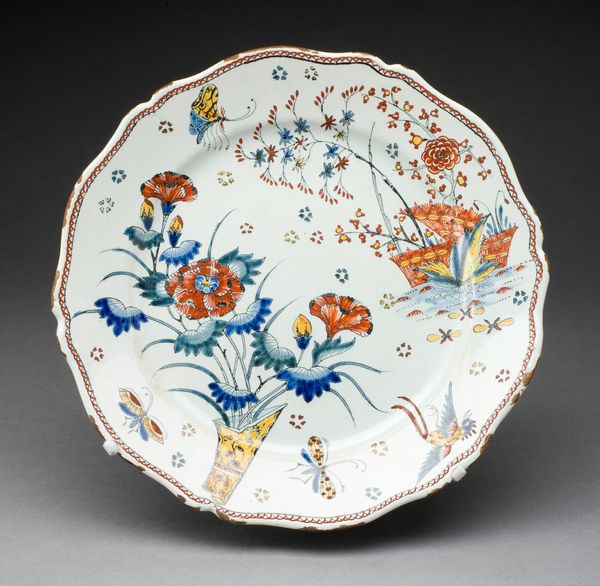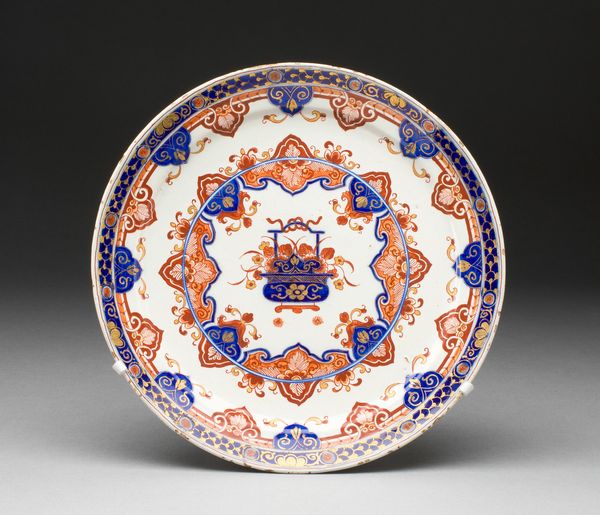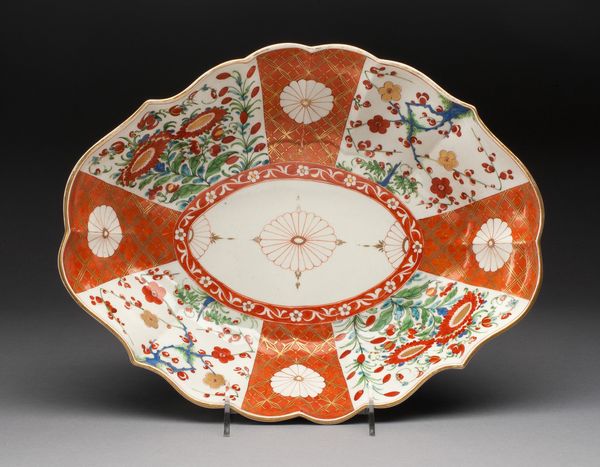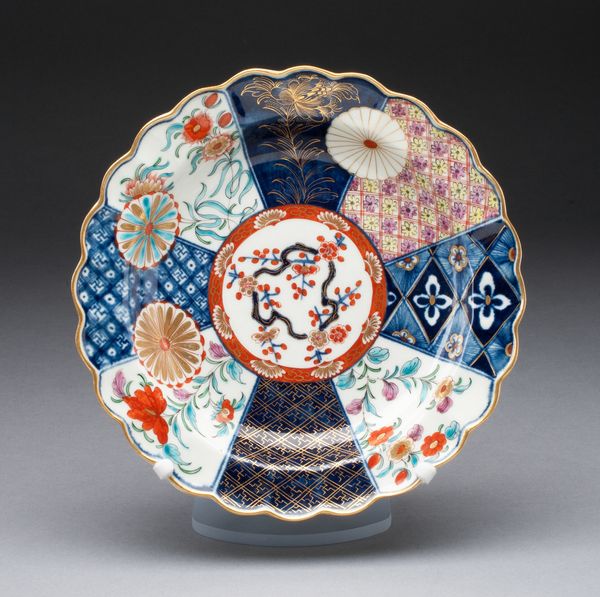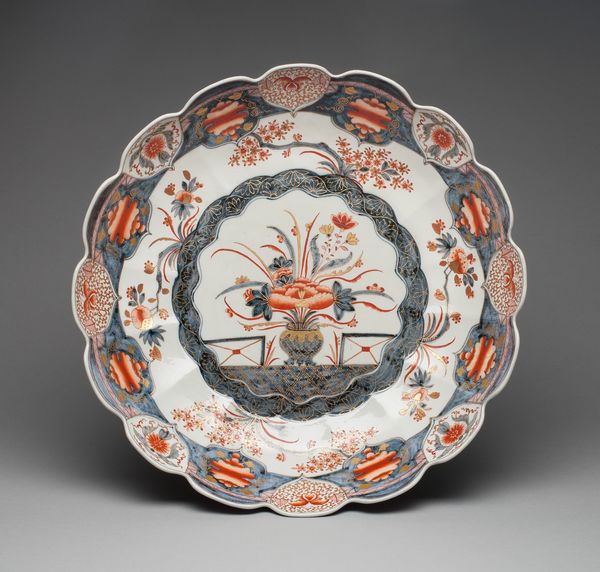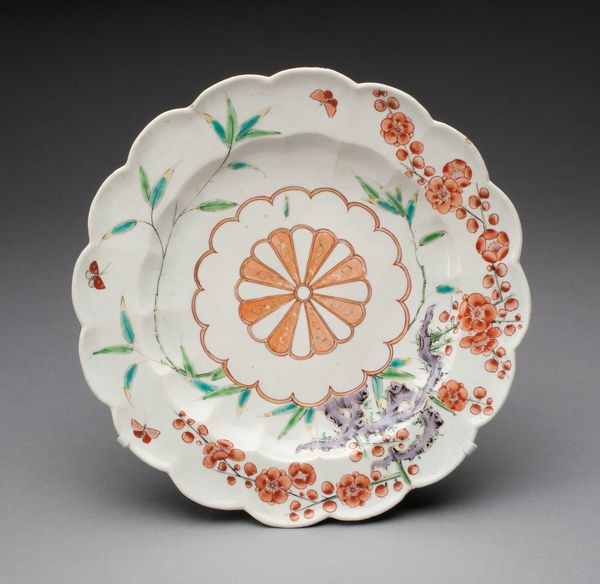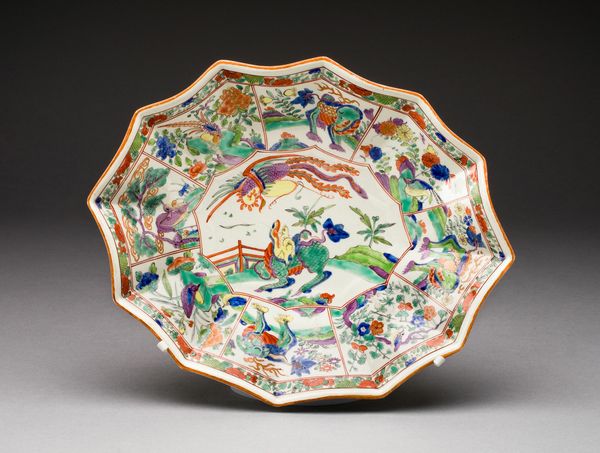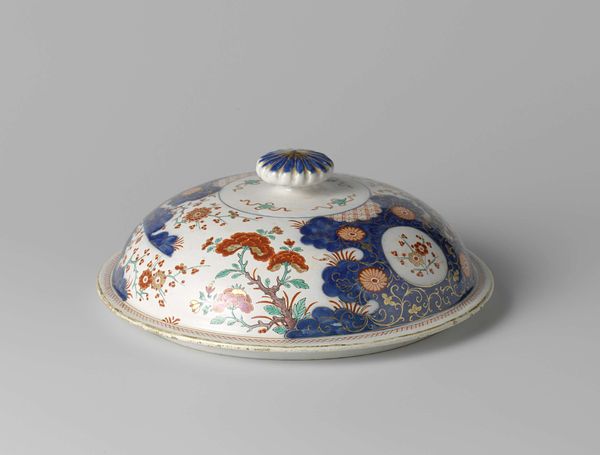
painting, ceramic, porcelain
#
pottery
#
painting
#
asian-art
#
ceramic
#
porcelain
#
ceramic
#
decorative-art
Dimensions: Diam. 23.5 cm (9 1/4 in.)
Copyright: Public Domain
Curator: Let's discuss this beautiful plate crafted around 1770 by the Worcester Royal Porcelain Company, currently residing at The Art Institute of Chicago. It's a delightful piece of porcelain. Editor: It's so visually active! The bold patchwork design immediately strikes me. A series of distinct motifs – geometric patterns and floral arrangements–clash, creating this energetic feeling. Curator: Exactly! Porcelain during this period wasn't merely functional; it was a canvas for displaying wealth, refined taste, and engagement with global artistic trends. The patterns, a mix of Japanese and European aesthetics, signify the global trade influencing British decorative arts. Editor: That intersection is what gets me thinking. Looking at the central floral medallion set against those radial segments and scattered imperial crests feels less like harmony, and more like a forceful arrangement. I wonder about the laborers making this, catering to colonial British society. Curator: An important perspective to keep in mind. But I believe this was meant as a beautiful piece—notice how the floral arrangements themselves borrow heavily from symbolic representation. The Chrysanthemum for instance, a symbol of longevity and joviality. Editor: Sure, but even the selection and stylization of flora holds a narrative about who is centered. European interpretations of Asian art also bring a history of power and domination. It’s never just purely decorative, right? The plate is itself part of a complex network of cultural exchange. Curator: It is! Its decorative exuberance points to a story that's about status and appropriation as much as artistic fusion. By focusing on the symbolism—and the implications of the symbolism in its global, commercial context— we gain a richer understanding of how it spoke to 18th century sensibilities. Editor: I find myself wanting to contextualize the social ramifications of such blatant fusion more. It compels us to reflect on the enduring legacy of colonialism visible in museums today, right? Curator: Yes, indeed! Examining art objects through varying critical frameworks reveals deeper meaning about who we were, are, and aspire to be. Thank you for shedding light on this.
Comments
No comments
Be the first to comment and join the conversation on the ultimate creative platform.
